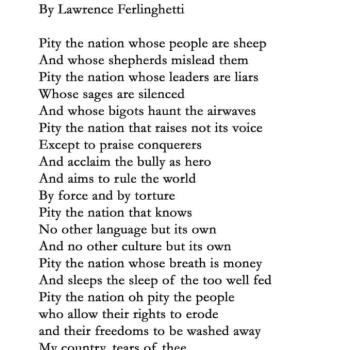 The following is a helpful post by my friend Larry Hurtado.
The following is a helpful post by my friend Larry Hurtado.
“Scriptures” and “Canon” |
A few days ago a former PhD student shared with me the anonymised reviews of a book proposal, one of which was a bit ill-tempered, and also ill-informed (and which also directed some of its ire against me). One of the substantive errors was the claim that it is anachronistic to refer to texts as functioning as “scripture” in the second century, the reviewer asserting that this is to import a concept from the fourth century.
The reviewer’s core confusion here is to fail to differentiate between “scripture” and “canon”. A biblical “canon” of texts refers to “a fixed collection of scriptures” (to quote from the Introduction to L. M. McDonald and J. A. Sanders [eds.], The Canon Debate [Peabody, MA: Hendrickson, 2002], 11). Such a fixed collection of the 27 writings that make up our familiar NT is commonly dated from the late 4th century. But “canon” refers to a fixed collection of texts functioning as “scripture”, and “scripture” refers more to the regard, function, and status of writings in given groups of people.
It is evident that from the outset early Christian circles regarded certain writings as “scripture”, initially of course, writings of what came to be the Hebrew Bible and Christian OT. The NT is replete with references to “scripture(s)” (Greek γραφη/αι), e.g., Matt 21:42; Acts 1:16; 1 Cor 15:3). Probably the earliest reference to Christian writings as “scripture” is with reference to Paul’s letters in 2 Peter 3:15-16, (2 Peter dated variously ca. 70-150 CE). So it is incontrovertible that at least some Christian circles began to regard some Christian writings as scripture at least by sometime in the 2nd century. There wasn’t yet a fixed “canon” widely accepted, but there surely were Christian “scriptures”.
In fact, of course, there also was a canon, that of Marcion, which takes us back to ca. 140-150 CE, a closed list containing solely the Gospel of Luke and ten letters of Paul, the OT writings and all others excluded. That is, although what became the mainstream body of Christians (whom we refer to as “orthodox” and “catholic”) took a good time longer to work out their closed canon, the issue of what should comprise a “canon” was put on the table by Marcion already in the second century.
So, when I say that 2nd and 3rd century Christians seem to have preferred the codex over the roll particularly for writings that they regarded as “scripture”, contrary to that anonyous and ill-informed reviewer, that is not use of an anchronistic term. And it is simply the case that earliest Christian copies of texts that we know were widely regarded as “scripture” (OT writings, and writings that came to form part of the NT such as the Gospels) are almost entirely codexes. Christians tended to prefer the codex for other writings too, but not nearly so strongly. About 65% of 2nd-3rd century copies of other Christian literary texts (e.g., theological treatises, other gospels, etc.) are codex form, and the rest are rolls (i.e., about one-third).
So, copying a text in a codex doesn’t necessarily mean it was regarded/treated as “scripture”. But I contend that copying a text on a roll, for most 2nd-3rd century Christians at least, meant that the text (or at least that copy of it) wasn’t regarded as “scripture”.
In any case, other than in Marcionite circles, in 2nd-3rd century Christianity there wasn’t yet a fixed “canon”, but there certainly were “scriptures”.
(The McDonald/Sanders edited volume mentioned above is now probably the best single resource-volume on the many issues and bodies of data involved in the formation of the OT/Hebrew Bible and the NT.)












